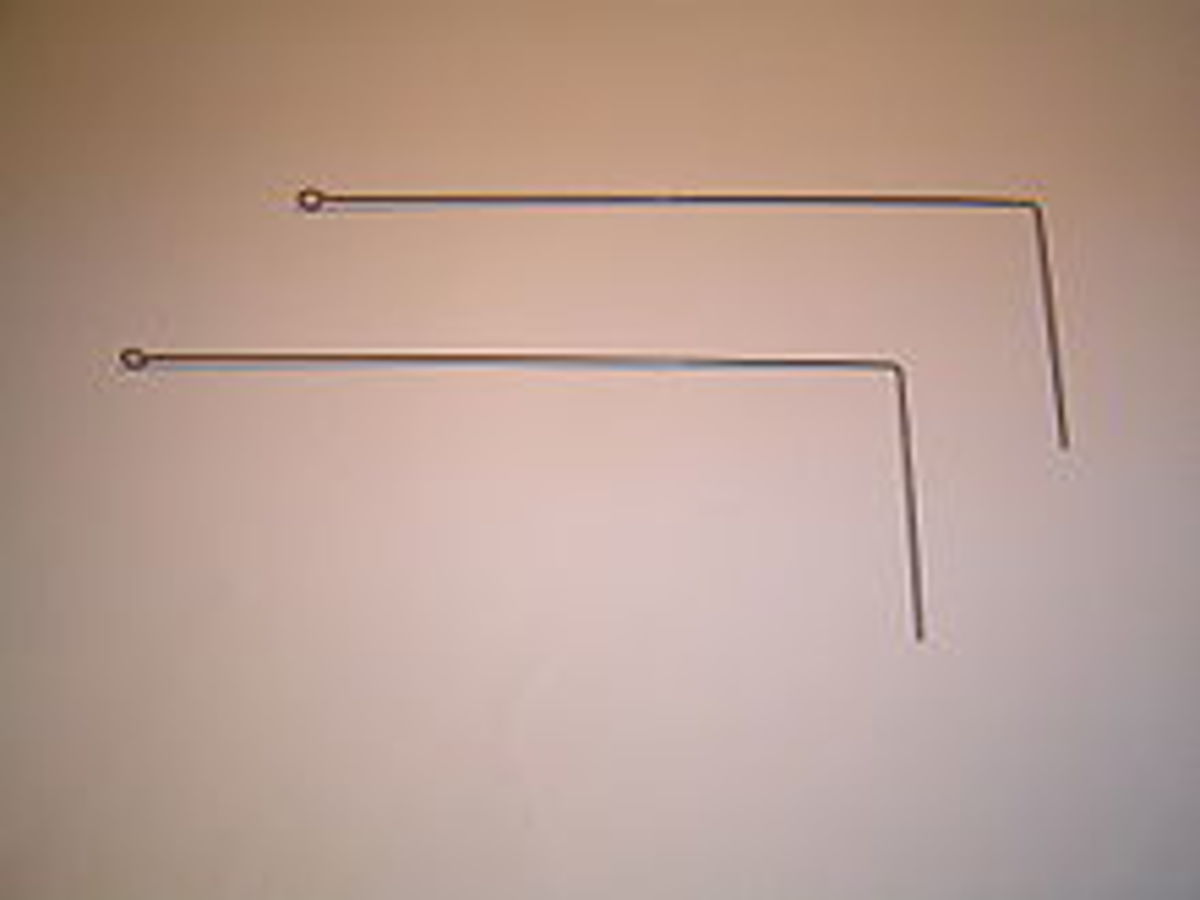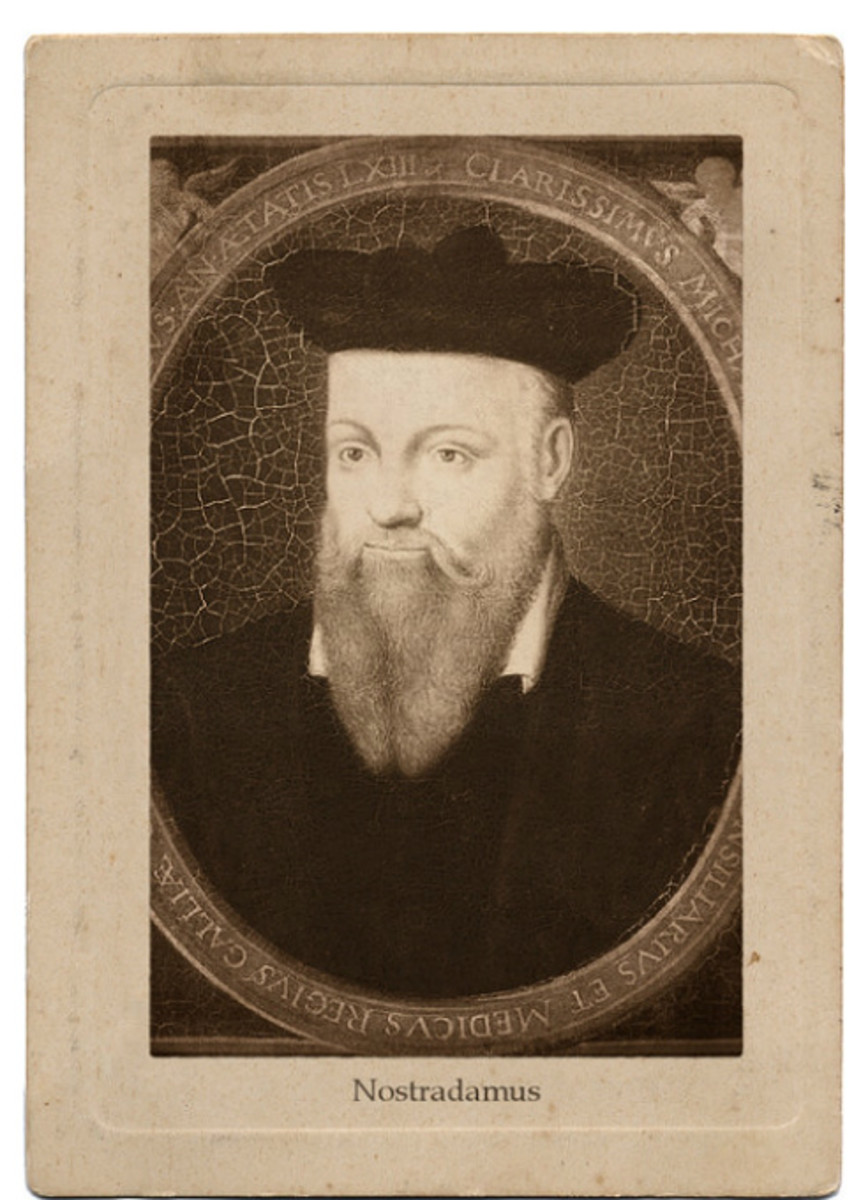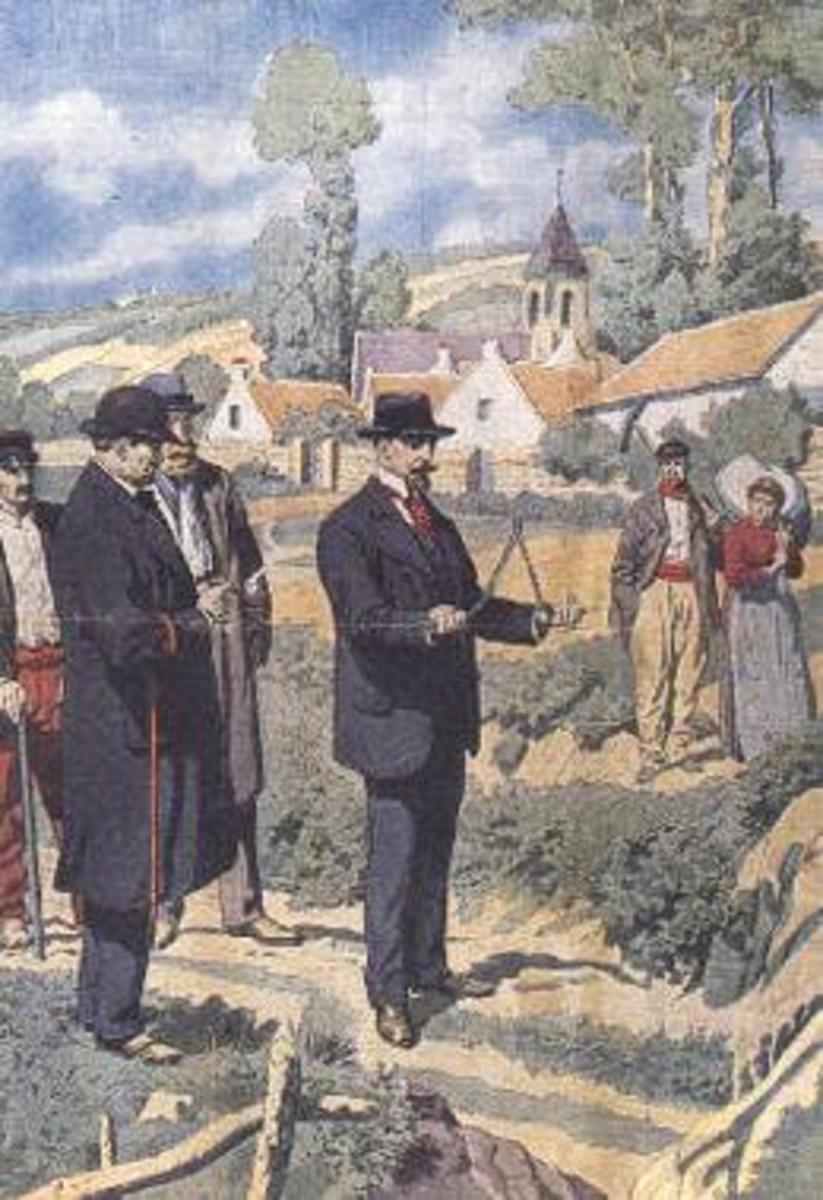Fortune Telling for Yourself
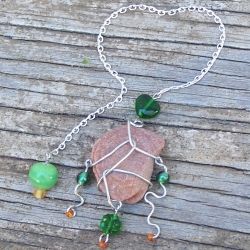
Free Psychic Readings, Any Time, Anywhere
What's less confusing than astrology, less time consuming than Tarot, and less headache-inducing than numerology? Consulting your very own pocket-size oracle.
Pendulum divination is an easy, fast, and relatively inconspicuous way to seek guidance in making decisions. The pendulum is also capable of offering detailed and surprisingly accurate information, but of course elaborate answers require elaborate preparations. In this article we're going to focus on getting answers to simple yes-or-no questions. Once you see how easy that is, chances are you'll want to learn more, so I'll show you where to go from here.
What is a Pendulum?
The word pendulum can refer to different things, but the kind needed for divination is neither metaphorical nor part of a clock. It is simply a small weight suspended at the end of a short length of chain, leather, string, or some similar material. Have a look at the pictures. :)

Dowsing, Divination, Communication
An Overview of the Uses of Pendulums
Dowsing
Attempting to find something that's hidden, through use of divining rods.
Though pendulums are seldom mentioned in dictionaries in connection with dowsing, they have been successfully used for everything from finding missing objects to discovering buried bombs, either directly or on maps. Dowsing is also spelled dousing, and can be referred to as "water witchery" when the hidden object being sought is an underground source of water.
Divination
Attempting to predict the future through occult, supernatural, or psychic means.
Again, the dictionaries fall a bit short when it comes to pendulums. In addition to foretelling future events, they can be used to answer questions about the past, or events occurring at the time of the reading that are taking place in a distant location. These purposes are similar to psychic abilities such as postcognition, clairvoyance, and clairaudience.
Communication with Spirits
Some psychics and paranormal researchers believe that pendulums can be used to communicate with spirits, in much the same way that Ouija and other spirit boards or planchettes are used. The idea is that it's a non-corporeal being (one without a physical body) who's making the pendulum move in response to questions asked by the person holding the pendulum.
Contact with a spirit does not have to be negative or frightening. The spirit moving the pendulum could just as easily be a guardian, a deceased friend still looking after you, or an angel, as it could something malevolent. Though this article is not meant to address spirit communication, I will say that one way to avoid a negative experience is to state out loud, at the beginning of the session, that no being who means you harm may make contact with you.
Communication with Oneself
Whether it's referred to as the Higher Self or the subconscious mind, there is something within the human psyche that knows more than our waking minds perceive. It's possible to seek guidance from this deep source of knowledge by use of a pendulum.
This form of communication is what we are about to explore.
The Pendulum Poll
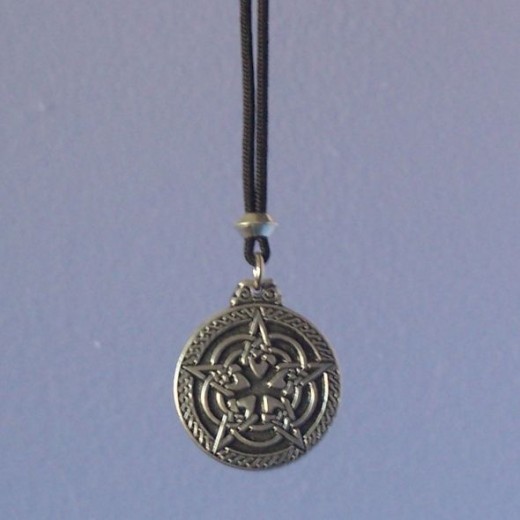
Have you ever used a pendulum for dowsing, divination, or communication?
Using a Pendulum - It's Easier than You Might Think
- Sit in a chair with arms, or on the floor (or ground). The hand holding the pendulum needs to be steady, and you'll need to be able to clearly see the pendulum's movements, so you'll want to brace that elbow on the arm of the chair, or on your knee if you're sitting cross-legged. You can also sit at a table and brace your arm on it, though that position can become uncomfortable after a few minutes with the edge of the table digging into your arm.
- Hold the top part of the pendulum loosely. (Some pendulums have beads or similar objects at the top end of the chain, cord, or whatever the weight is suspended from, to indicate which end is which.) If you want to ground and center yourself, or call upon spiritual protection, now is the time.
- Determine the correlation between the pendulum's movements and the answers to questions (see What do the Movements Mean?, below). Do this before every question-and-answer session, even if you've used the pendulum earlier the same day, because circumstances can affect the results. Think of it in the same light as tuning a guitar or violin before you begin to play - it not only improves the results, it also puts you in the right frame of mind, and helps reestablish your connection with your instrument.
- Gently clear your mind of any concerns other than the one you want to ask about. Focus on one yes-or-no question. When you feel ready, ask your question. You can ask it out loud, or just think it really strongly. After a while, the pendulum will begin to move. Pay attention to its direction - that is the answer to your question.
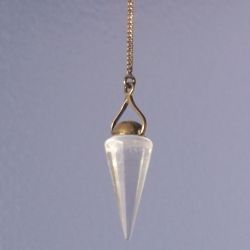
What do the Movements Mean?
Asking for Answers
There are five basic movements your pendulum might make: Back and forth, side to side, diagonally, spinning or twirling, and stopping; most other motions are variations of these.
Back and forth - moving toward you, then away from you, then back again.
Side to side - moving from your left to your right then back again.
Diagonally - moving from close to you on your left side to far from you on your right side and back again, or just the opposite, from close to you on your right side to far from you on your left side and back again.
Spinning or twirling - making small or large clockwise or counterclockwise circles.
Stopping - staying completely still.
With simple pendulum divination, it's best to stick with just a few possible answers: Yes, no, I don't know, and I don't want to answer right now ("I" in this case meaning your Higher Self or subconscious mind).
Some sources state that the movements always have the same meanings: Back and forth means yes, side to side means no. And you may find that this is true, with one particular pendulum or with every one you use. Or you might find that it's true only when you use one pendulum but not another, or that being indoors or outdoors has a bearing on the meaning associated with each motion.
Determine the meaning of the movements by asking questions to which you already know the answer. You might try asking something like "Am I wearing a ring?" If you are, and the pendulum moves back and forth, then a back and forth motion means "Yes" during that session; if you're not, and the pendulum moves back and forth, then a back and forth motion means "No".
You can also ask for a demonstration. Say (or think) "Show me a positive, yes answer." Once you've seen what "Yes" looks like, ask to see a negative, no answer. You can also ask to see the motions for "I don't know" and "I don't want to answer right now."
A Few Caveats - Points to Consider
- Limit the length of your sessions when you're first starting out, or if you haven't used a pendulum in several weeks. It may not seem like it, but pendulum divination takes a lot of energy. If you ask question after question during your first few sessions, you could end up with an awful headache.
- Don't be frustrated if you don't get immediate results while you're learning. It can take a while to establish a connection with your pendulum and, as with any skill, it takes practice to become proficient.
- If you've been getting good results during a session, with (for example) a back and forth motion meaning "Yes" and a side to side motion meaning "No", and the pendulum starts moving in a completely different way in response to a question - spinning, for instance, or stopping its motion entirely, then there's probably a reason why you're not getting a clear answer. You can ask yes-or-no questions to try to find out what's going on, but it might be better to put the pendulum away and try again later.
- Don't ask silly, meaningless, or trick questions. It's disrespectful and will slow down both your learning process and the forming of a connection between your pendulum and you. Pendulum divination isn't a game. Only ask a question if you need to know the answer.
- It's a good idea to keep your pendulum in a safe place where it won't be damaged and where other people won't mess with it. Keeping it in its own pouch or box isn't necessary, but it does help set the pendulum apart as something special. If your pendulum is also a pendant (i.e., it's on a long cord or chain) you can also wear it as a necklace, which will help deepen your bond with it.
Pendulums are not Magical!
There's no magic in a pendulum. It's not a lamp with a djinni inside. It's a tool to help you interpret messages from spirits, your Higher Self, or your subconscious mind - that's all.
Think of a great conductor standing before an orchestra, gesturing with the baton. The baton helps the conductor tell the orchestra what to do, but the musical knowledge, passion, and skill are within the conductor, not the baton.
Acquiring a Pendulum - Simple, Elaborate, Store-bought, or Homemade
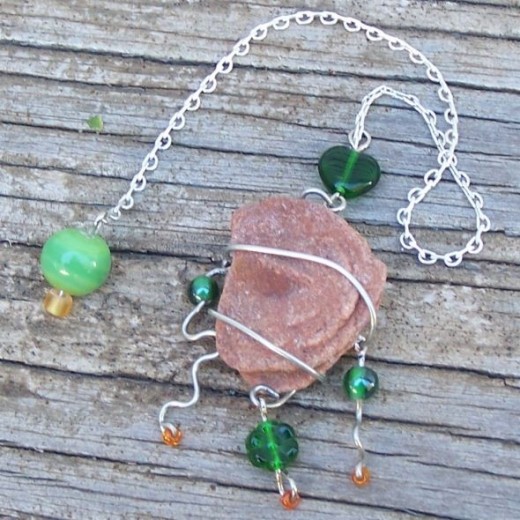
A pendulum doesn't have to be a work of art in order to work. It doesn't even have to be pretty. If you really need an answer and there's no pendulum available, you can get by with a car key and a piece of string. That's because pendulums themselves are not magical; they're just tools.
Still, if you're going to work with a pendulum fairly often, it might as well be something you like.
You can buy or make a pendulum. It can be costly or practically free. Try to avoid cheap materials like plastic, though - unless the plastic item is something that means a great deal to you, like a favorite childhood toy.
There is no particular shape a pendulum has to be either, as long as its weight is evenly balanced, and you can tell where it's pointing. If one side is heavier than the other, or you can't see its movements clearly, you're going to get false readings.
Of the three pendulums in the photographs, two were bought, and one was handcrafted. The circular Celtic-looking star is a pendant as well as a pendulum. The quartz crystal, on its 7" chain, was made specifically to be a pendulum. And the green and amber glass bead, silver wire, and stone rose monstrosity is one I crafted for a friend - a bit too flashy for me, but it works.
Pendulums
Want to Learn More?
There's a lot of information available online about pendulum divination and dowsing, some of it useful, some not so much. If something just doesn't sound right to you, follow your intuition and avoid it. And remember, the best instructor is experience.
- A Mini-Course in Pendulum Dowsing
Well thought out, well organized, and thorough - History of Pendulum Dowsing
A brief overview - Dowsing
The section on Modern Applications of Dowsing is especially noteworthy
Image Credits
The 18th century dowser is by Jean-Frederic Bernard, via Wikimedia Commons.
The photographs of pendulums are by me, Puckwudgie.





